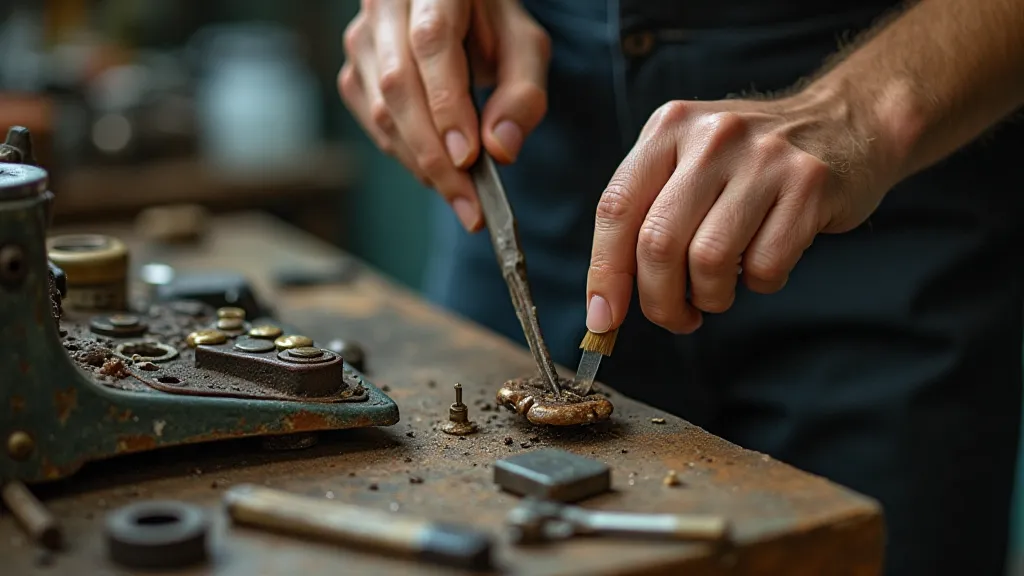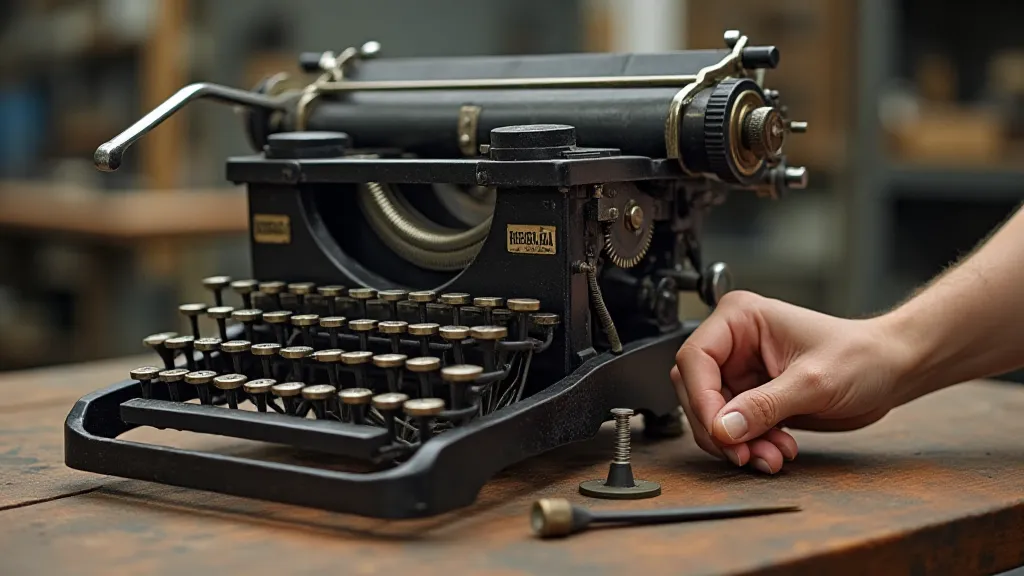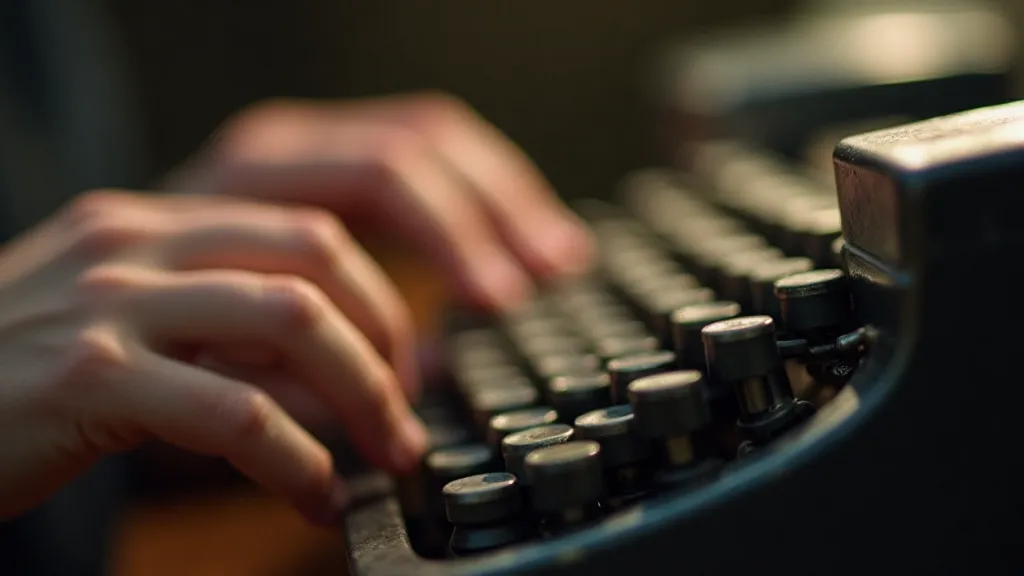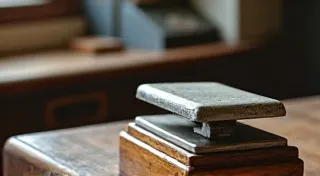A Tapestry of Letters: The Art of Repairing and Restoring Typewriters
The rhythmic clatter of keys, the satisfying ding of the carriage return – these sounds represent more than just the creation of text; they echo a bygone era, a time when communication felt deliberate, tangible. Typewriters. These once ubiquitous machines, now largely relics of a rapidly evolving world, possess a quiet dignity and a remarkable resilience. They’re not simply office equipment; they're mechanical sculptures, repositories of history, and testaments to human ingenuity. And for a dedicated few, the art of repairing and restoring them is a craft steeped in tradition, requiring a unique blend of mechanical aptitude, historical understanding, and genuine appreciation for these extraordinary machines.
My own fascination began with a forgotten Underwood, rescued from a dusty attic. Its keys stuck, the ribbon was long gone, and the once gleaming black finish was marred by years of neglect. I remember the immediate sense of connection – the feel of the metal, the almost palpable sense of stories waiting to be unlocked. It wasn’t just a machine; it felt like a friend, silent and needing a little coaxing back to life.

The Rise and Reign of the Typewriter: Forging a New Voice
To truly appreciate the art of typewriter repair, one must understand its historical context. The development of the typewriter wasn't the work of a single inventor but a gradual evolution spanning decades. While numerous individuals experimented with mechanized writing devices, Christopher Latham Sholes, Carlos Glidden, and Samuel Soule are generally credited with patenting the first commercially successful typewriter in 1868. The Remington No. 1, as it was initially known, produced text that appeared on a carriage that had to be manually rotated after each line, a quirk that influenced early typing practices. The industrial revolution’s impact on manufacturing processes fundamentally altered the way goods were produced, and this newfound ability to mass-produce components directly fueled the rise of the typewriter, effectively forging a new voice for writers and businesses alike. The shift toward mass production wasn't merely a technological advancement; it was a profound social and economic transformation, dramatically altering the landscape of creative work. This period saw the rise of new industries and the democratization of skills previously held by skilled artisans. Understanding this context is vital when considering the rise of the typewriter.
The subsequent decades witnessed a flurry of innovation. The Underwood No. 5, introduced in 1900, revolutionized the design with its visible writing feature and its iconic front-facing layout, quickly becoming the industry standard. The Corona, with its portable design, catered to a growing demand for on-the-go writing. These machines weren't merely tools; they were symbols of progress, democratizing communication and transforming the workplace. They empowered women entering the workforce, enabling them to secure positions as typists and secretaries – a crucial step toward greater economic independence. The design choices, particularly the evolution of fonts and their visual impact, also hold a fascinating layer of history. The elegance of early typefaces, the subtle variations in kerning and leading, all contributed to the typewriter's aesthetic appeal and influenced the style of writing produced on them. The burgeoning world of design and typography was intrinsically linked to the evolution of the typewriter, shaping not only its functionality but also its cultural significance. The impact of industrialization wasn’t simply about manufacturing processes; it also profoundly affected artistic and creative expression, finding a powerful medium in the typewriter.
The Craft of Restoration: More Than Just Mechanics, A Symphony of Time
Restoring a typewriter isn’t simply a mechanical exercise; it’s a delicate act of preservation, a conversation with the machine's history. It demands patience, a keen eye for detail, and a surprising amount of problem-solving. Many repairs involve intricate disassembly, cleaning, lubrication, and the replacement of worn parts. Typewriter mechanics are complex, with hundreds of individual components interacting in a precisely orchestrated dance. Understanding the original design intent, recognizing the nuances of different models, and sourcing authentic replacement parts – often requiring scouring online forums and antique shops – are all essential skills. The gradual shift from early, cumbersome models to the sleek machines of the mid-century created a tangible record of changing aesthetic preferences and technological advancements. A truly skilled restorer is not only a mechanic but also a historian, able to decipher the stories embedded within each component.
Beyond the mechanical aspects, there's an aesthetic component. The finish of a typewriter – the enamel, the paint, the chrome – is integral to its character. Stripping away layers of grime and oxidation to reveal the original luster can be a deeply rewarding experience. However, knowing when to restore and when to preserve the patina of age is crucial. Excessive polishing can erase the machine's history, diminishing its charm. A truly skilled restorer understands the balance between functionality and historical integrity. The color palettes chosen for these machines, and their inherent associations, often tell a story about the era in which they were produced. Those interested in these details might find further insight into the fading colors of typewriter history. The hues of these machines, from the deep forest greens to the rich creams, evoke a sense of nostalgia and contribute to their unique character. The original choice of color wasn’s arbitrary but often reflected prevailing design trends and marketing strategies.

The Scarcity of Skills and the Future of Typewriter Preservation: A Silent Threat
Sadly, the pool of experienced typewriter repairers is shrinking. The rise of digital technology has led to a decline in the demand for these services, discouraging younger generations from learning the craft. This scarcity of skilled labor poses a threat to the preservation of these historical artifacts. It's a sobering thought – that these machines, once so vital to communication, could fall silent due to a lack of qualified custodians. The impact of this technological shift echoes through every aspect of the typewriter's story, influencing not just its practical use, but also its aesthetic legacy and the stories it helped create. Furthermore, the loss of this specialized knowledge threatens the ability to fully appreciate the intricate engineering and artistry behind these machines. Without dedicated restorers, these objects risk becoming silent relics, their stories lost to time.
However, there's also a resurgence of interest in vintage technology, fueled by a desire for tangible experiences and a yearning for simpler times. Collectors and enthusiasts are actively seeking out neglected typewriters, eager to restore them to their former glory. This renewed appreciation is driving a revival of typewriter repair workshops and online communities dedicated to sharing knowledge and resources. The internet has proven to be an invaluable tool for connecting restorers with those in need of their services, transcending geographical boundaries. This renewed interest also brings into focus the nuances of early typewriter fonts and their literary associations - a study that could explore the ghost in the font itself. The ability to trace the evolution of typography through these machines provides a fascinating window into the changing face of communication. The deliberate choice of font, the subtle variations in letterforms, all contributed to the unique character of each typewriter and the writing produced on it.
A Timeless Connection: Echoes of a Bygone Era
The rhythmic clicking of a restored typewriter, the smooth action of the keys – these are sensory experiences that digital technology simply cannot replicate. It’s a connection to a slower pace of life, to a time when communication demanded focus and intention. The art of typewriter repair isn’t just about keeping machines operational; it’s about preserving a piece of history, a tangible link to the past. It’s about understanding that these aren’t just pieces of office equipment; they are vessels of memory, witnesses to countless stories, and reminders of the enduring power of human ingenuity. They represent more than just efficient communication; they are artifacts of a specific cultural moment, reflecting changing social norms and artistic trends. The tactile experience of typing on a vintage machine fosters a deeper connection to the creative process, encouraging a more deliberate and thoughtful approach to writing.

My own Underwood, once silent and neglected, now sits proudly on my desk, a constant reminder of the beauty of mechanical artistry and the importance of preserving our technological heritage. It’s a small act, perhaps, but one that contributes to a larger effort – keeping the tapestry of letters alive for generations to come. The care required to restore these machines, from the intricate mechanics to the delicate preservation of their appearance, is a testament to their enduring value and the dedication of those who champion their survival. The essence of this craft goes beyond mere technical skill; it encompasses a profound respect for the history and artistry embedded within each machine.





